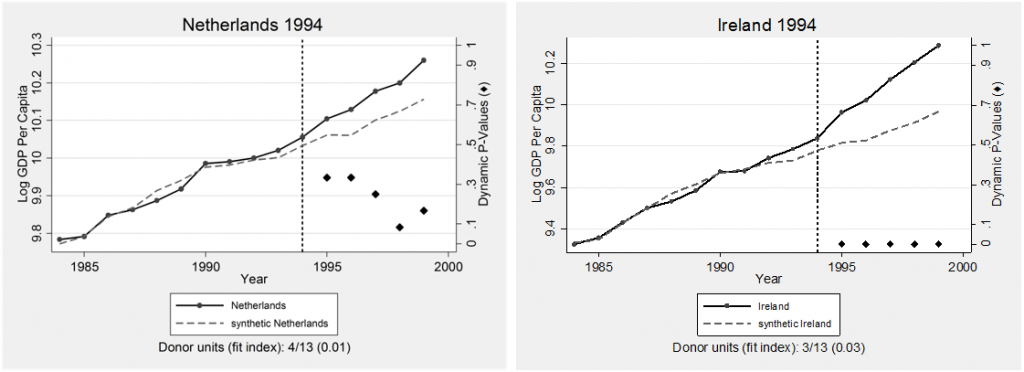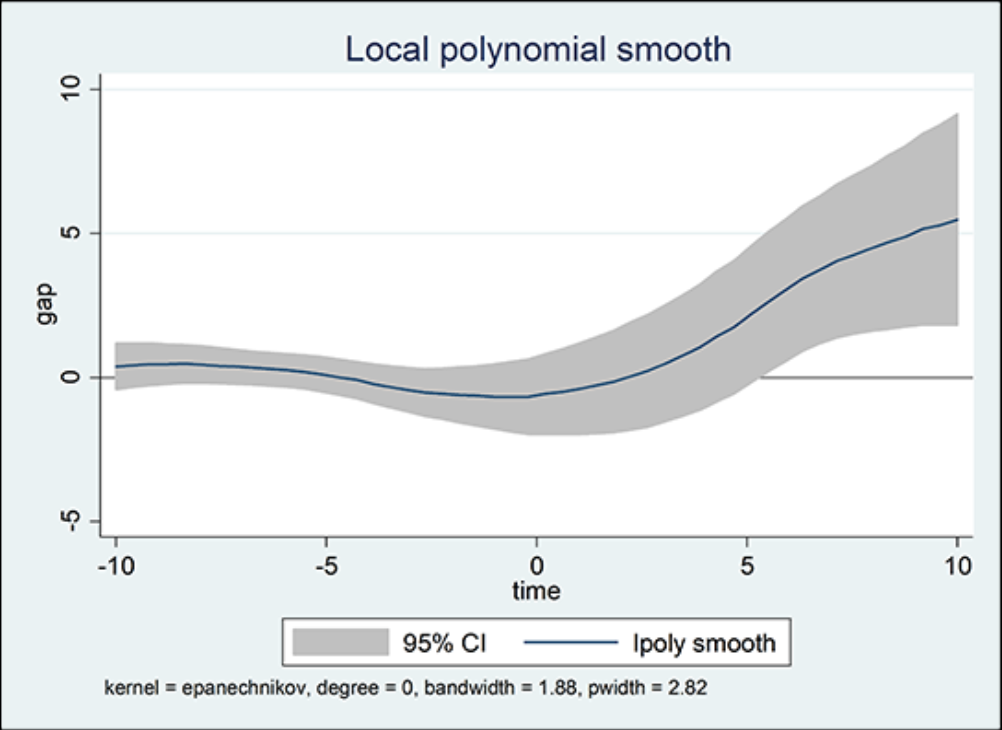Sunday, April 15, 2018
Do Wide-Reaching Reform Programmes Foster Growth?
A new Bruegel post estimates “the impact of large reform waves implemented in the past 40 years worldwide, [and shows] that reforms had a negative but statistically insignificant impact in the short term. […] Reforming countries, however, experienced significant growth acceleration in the medium-term. As a result, 10 years after the reform wave started, GDP per capita was roughly six percentage points higher than the synthetic counterfactual scenario.”
Figure 2. Statistical analysis on the difference between the two
Source: Marrazzo and Terzi (2017)
On the heterogeneity of reform impact, “The overall positive effect of reforms is confirmed in both instances (Table 1). However, advanced economies seem to have reaped fewer benefits from their extensive reform programmes than emerging markets. Moreover, the time-profiling of the pay-offs seems somewhat different; while countries closer to the technological frontier, and probably with better institutions, see benefits from reforms in the first five years, these materialise only in the longer run for emerging markets.”
Table 1. Average impact of reforms on yearly per capita GDP growth rate vis-à-vis counterfactual
Note: Bold indicates significance at the 5% level
Source: Marrazzo and Terzi (2017)
These findings are consistent with those in my forthcoming paper with Bibek Adhikari, Romain Duval, and Bingjie Hu. We use Synthetic Control Method (SCM) and implement six case studies of well-known waves of reforms, those of New Zealand, Australia, Denmark, Ireland and Netherlands in the 1990s, and the labor market reforms in Germany in the early 2000s. Our results suggest a positive but heterogenous effect of reform waves on GDP per capita.
 Source: Adhikari, Duval, Hu, and Loungani (2018)
Source: Adhikari, Duval, Hu, and Loungani (2018)
The Bruegel post is available here. Our paper is available here. For those who do not have access, the working paper version is available here.
Posted by at 11:34 AM
Labels: Inclusive Growth
Subscribe to: Posts

